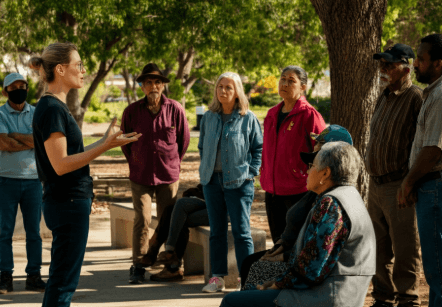Subdividing land can be a lucrative endeavor, offering the opportunity to maximize the potential of your property. In Florida, specific steps and regulations are needed to ensure a successful subdivision process. Whether you’re looking to create multiple plots for residential development or to enhance the value of your land, understanding the nuances of how to subdivide land in Florida is crucial. Read on as we walk you through the essential steps on how to subdivide land in Florida, helping you navigate the legal requirements, zoning laws, and practical considerations necessary for a smooth and profitable land subdivision project.
Notable real estate investors Steve Daria and Joleigh have successfully navigated the complexities of subdividing land in Florida, demonstrating the profitability of this venture. By meticulously adhering to zoning regulations and employing strategic planning, they have maximized the value of their properties. Their experiences underscore the importance of understanding local laws and leveraging expert advice in subdivisions.
What Does it Mean to Subdivide Land?
Before discussing how to subdivide land in Florida, it’s essential to understand that subdividing land involves dividing a larger parcel into smaller lots that can be sold or developed separately.
Local authorities regulate this process to ensure that each new lot adheres to zoning laws, land use regulations, and other essential criteria.
Benefits of Subdividing Land
Subdividing land in Florida offers numerous advantages, including increased property value, better land utilization, and potential revenue opportunities.
Maximize Value
Subdividing land presents an opportunity to maximize its value by dividing a large parcel into smaller lots.
Separating the land into more manageable and marketable sizes makes each lot more attractive to potential buyers or developers.
This increased appeal can lead to higher demand and, subsequently, higher prices per lot, ultimately resulting in a more excellent overall value for the land.

Flexibility
Subdividing land offers investors and landowners increased flexibility in their investment strategies.
Once divided, the smaller lots can be sold or developed independently, allowing various options to capitalize on the land’s potential.
Whether selling individual lots to different buyers or developing each for specific purposes, such as residential or commercial use, subdividing provides the flexibility to adapt to market demands and optimize returns on investment.
Increased Marketability
Subdividing land can significantly enhance marketability by supplying a broader range of potential buyers.
At the same time, larger parcels may appeal to confident investors or developers with specific needs, and more miniature lots appeal to a broader audience, including individuals looking to build their dream homes, small-scale developers, or those seeking investment opportunities.
By offering a variety of lot sizes and potential uses, subdivided land becomes more accessible and attractive to different market segments, ultimately increasing its market value and demand.
Get Started: Get Your Cash Offer Below…
We are direct land buyers. There are no commissions or fees and no obligation whatsoever. Start below by sharing where your property is and where we can send your offer…
Essential Steps on How to Subdivide Land in Florida
In this section, we will outline the essential steps on how to subdivide land in Florida, ensuring compliance with state regulations and achieving optimal results.
1. Research Zoning Laws and Regulations
Before you begin subdividing land, it’s crucial to understand the zoning laws and land use rules in your area.
Zoning laws dictate what structures can be built on the land, and land use regulations control how the land can be used.
- Consult Local Zoning Office: Contact your local zoning office or planning department for information on your property’s zoning classification and applicable restrictions.
- Review Comprehensive Plans: Comprehensive plans provide a long-term vision for land use in the community. Ensure your subdivision plans align with these plans.
2. Hire a Professional Surveyor
A professional land surveyor is essential in subdividing land.
They will create a detailed map of your property showing the boundaries and dimensions of the new lots.
- Land Survey: The surveyor will conduct a thorough survey to establish the precise boundaries of the property.
- Subdivision Plat: The surveyor will prepare a subdivision plat, which is a detailed map outlining the land’s proposed division.
3. Prepare a Preliminary Plat
Once you have the survey and subdivision plat, you must prepare a preliminary plat to submit to the local planning department.
This plat provides a detailed subdivision layout, including lot sizes, street layouts, and utility placements.
4. Submit Your Application
With your preliminary plat ready, it’s time to submit your application to the local planning department.
Your application should include:
- Preliminary Plat: Detailed layout of the proposed subdivision.
- Application Fee: Fees vary by location, so check with your local planning department.
- Supporting Documents may include environmental impact studies, drainage plans, and other necessary reports.
5. Attend Public Hearings
Subdividing land requires approval from a planning commission or city council in many areas.
This often involves attending public hearings where community members can express their opinions on the proposed subdivision.
- Prepare to Present: Be ready to present your subdivision plan and answer any questions or concerns.
- Gather Support: Engaging with community members and stakeholders beforehand can help garner support for your project.
6. Obtain Final Approval
If your preliminary plat is approved, you must submit a final one for review.
This final plat should incorporate any changes or conditions the planning commission requires.
- Final Plat Review: The planning department and other relevant agencies will review the final plat.
- Final Approval: Once the final plat is approved, you can record the subdivision with the county recorder’s office.
7. Record the Subdivision
Recording the subdivision officially divides the land and creates new legal descriptions for each lot.
This step is crucial for legally recognizing and allowing the latest lots to be sold or developed separately.
- County Recorder’s Office: Submit the final plat to the county recorder’s office for official recording.
- Legal Descriptions: Obtain new legal descriptions for each lot necessary for legal transactions.
8. Develop Infrastructure
Depending on your subdivision plan, you may need to develop infrastructure such as utilities, roads, and drainage systems.
- Infrastructure Planning: Work with engineers and contractors to plan and develop the necessary infrastructure.
- Compliance: Ensure all infrastructure meets local codes and standards.
Strategies for Successful Land Subdivision
When planning to subdivide land in Florida, employing effective strategies is crucial to navigating legal requirements, optimizing land use, and maximizing investment returns.
Understand Market Demand
Research the local real estate market to understand the demand for different types of properties.
This insight can help you design a subdivision that meets market needs and maximizes profitability.
Plan for Future Growth
Consider how the subdivision will fit into the community’s long-term growth plans.
Designing with future expansion can make the development more attractive to buyers and investors.
Engage with the Community
Building relationships with community members and stakeholders can help ease the approval process and garner support for your project.

Work with Professionals
Hiring experienced professionals, such as land surveyors, engineers, and real estate attorneys, can help navigate the complexities of the subdivision process and ensure compliance with all regulations.
Conclusion
Subdividing Land in Florida offers exciting opportunities for real estate developers, property investors, and landowners. By following the essential steps on how to subdivide land in Florida—from understanding zoning laws and hiring a surveyor to obtaining approvals and recording the subdivision—you can navigate the process effectively and unlock the full potential of your Land.
Successful land subdivisions require careful planning, professional guidance, and a thorough understanding of local regulations. By applying these strategies and tips, you’ll be well on your way to breaking ground and achieving your real estate goals.
**NOTICE: Please note that the content presented in this post is intended solely for informational and educational purposes. It should not be construed as legal or financial advice or relied upon as a replacement for consultation with a qualified attorney or CPA. For specific guidance on legal or financial matters, readers are encouraged to seek professional assistance from an attorney, CPA, or other appropriate professional regarding the subject matter.
